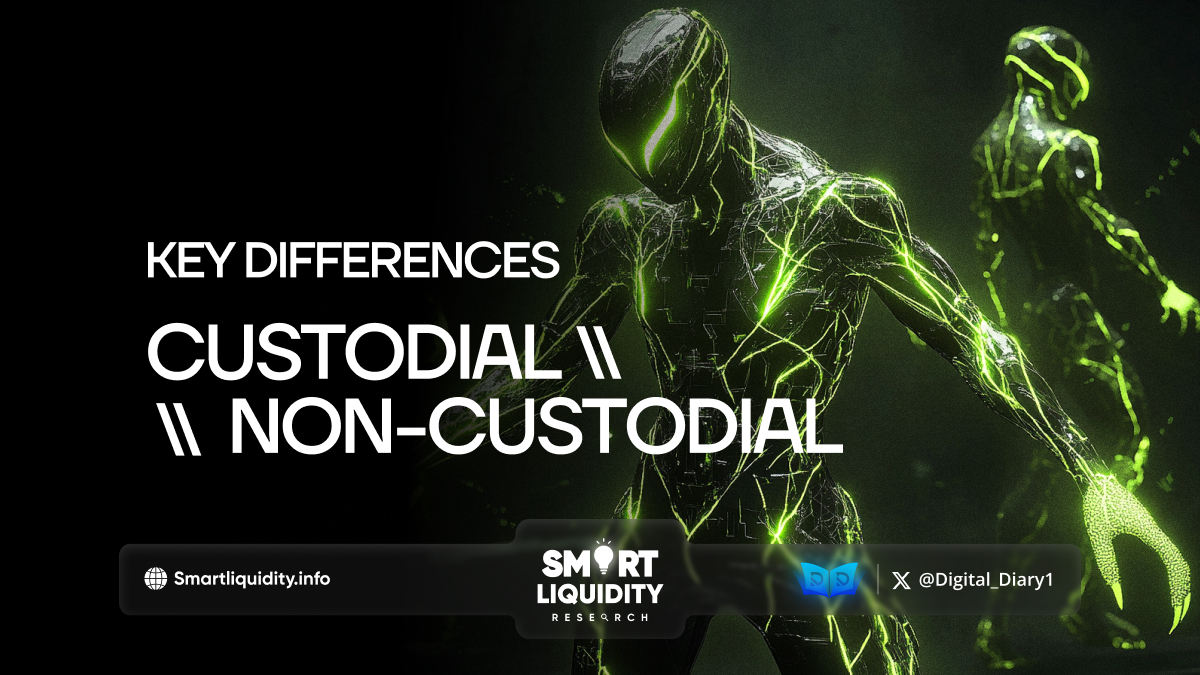Custodial vs. Non-Custodial: Key Differences


In the ever-evolving world of digital finance and blockchain technology, the concepts of custodial and non-custodial solutions have taken center stage. Understanding the fundamental differences between these two approaches is crucial for anyone navigating the space of digital assets, be it cryptocurrencies, NFTs, or other forms of digital tokens. Both models come with their own set of advantages, risks, and use cases. So, which one suits you better? Let’s dive into the key differences between custodial and non-custodial solutions and why it matters to your financial journey.
What is a Custodial Solution?
In a custodial setup, a third party—often an exchange or a service provider—takes control of your private keys, essentially acting as the guardian of your digital assets. Think of custodial services like a traditional bank: you deposit your funds, and the institution takes responsibility for securing them. However, just like with a bank, the convenience comes with certain trade-offs.
When you opt for a custodial wallet or service, you are entrusting your assets to a centralized entity. This means that while you don’t need to worry about the technicalities of managing private keys, you do have to place a significant amount of trust in the custodian. If the company experiences a hack or internal mismanagement, your funds could be at risk. On the flip side, custodial services often provide better customer support, insurance, and easier access for beginners.
What is a Non-Custodial Solution?
Non-custodial solutions, on the other hand, put the control entirely in your hands. Here, you are the custodian of your private keys. This model aligns with the original ethos of decentralization and financial sovereignty that blockchain technology advocates. By using a non-custodial wallet, you eliminate the middleman and maintain full control over your digital assets.
While this grants users more autonomy and privacy, it also means taking on greater responsibility. If you lose access to your private keys, there’s no “reset password” button, and no third party can help you recover your assets. Non-custodial wallets are favored by those who prioritize security and self-reliance, but they require a higher level of technical understanding and attentiveness to safely manage.
Key Differences Between Custodial and Non-Custodial Solutions
- Control Over Assets
- Custodial: The third-party provider holds the private keys. You trust them to secure your assets.
- Non-Custodial: You hold the private keys, giving you full control and responsibility over your assets.
- Security Risks
- Custodial: There is a risk of centralized failures such as hacking or insolvency of the custodian.
- Non-Custodial: The main risk is personal error—losing your private keys or not following proper security protocols.
- Ease of Use
- Custodial: More beginner-friendly. Users don’t need to manage private keys and typically have access to customer support.
- Non-Custodial: Requires users to manage their private keys, which can be daunting for beginners but empowering for advanced users.
- Transaction Speed
- Custodial: Transactions may be delayed as they depend on the custodian’s infrastructure.
- Non-Custodial: Transactions are faster and more direct, as they happen peer-to-peer without intermediaries.
- Privacy
- Custodial: Since custodians typically require personal identification (KYC), privacy is often compromised.
- Non-Custodial: Users maintain a higher level of privacy since there’s no need for identity verification.
Which One Should You Choose?
The choice between custodial and non-custodial solutions depends largely on your priorities and level of experience in the digital asset space.
- Go Custodial if you’re a beginner looking for convenience and customer support. Custodial wallets and exchanges simplify the process of buying, storing, and trading digital assets without requiring much technical knowledge.
- Go Non-Custodial if you prioritize security, privacy, and full control over your assets. If you’re confident in managing private keys and want to avoid centralized risks, non-custodial wallets offer the autonomy that the blockchain was designed to provide.
The Best of Both Worlds?
Interestingly, the industry is seeing innovations that try to blend the benefits of both custodial and non-custodial models. Hybrid solutions and decentralized platforms with enhanced user interfaces aim to give users more control while reducing complexity. This indicates that the future may not require a strict choice between custodial and non-custodial—users may soon have more options that offer a balance of control, security, and ease of use.
Conclusion
Custodial and non-custodial solutions serve distinct purposes in the realm of digital assets. Whether you value convenience or control will determine which path is right for you. With the increasing adoption of blockchain technology and digital currencies, understanding these differences will not only help protect your assets but also empower you to make smarter decisions as you navigate the digital economy.
Are you ready to take control, or do you prefer leaving the heavy lifting to the experts? The choice is yours, and it’s one that could shape your entire digital asset experience.




